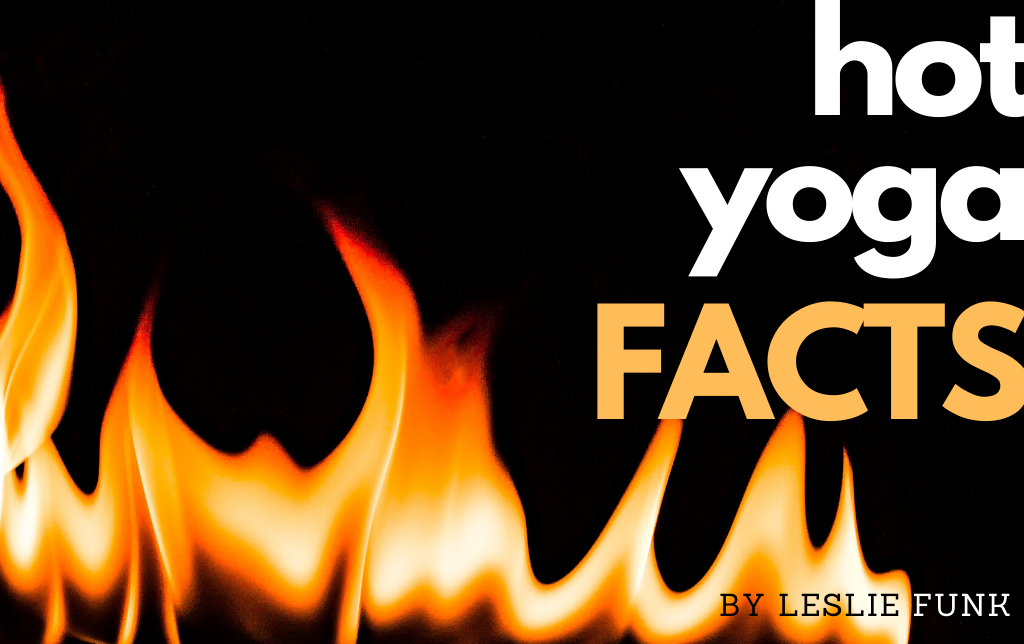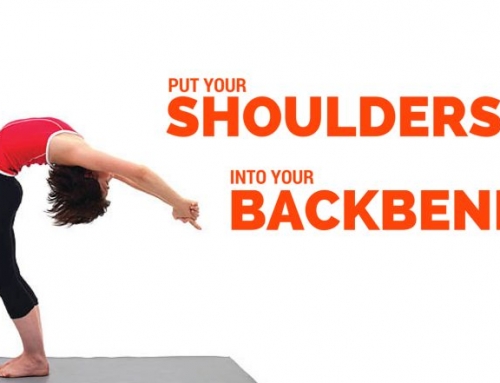Hot Yoga Facts: What does a non-biased professional say?
“Hot Yoga”: Physiological Concerns while Exercising in the Heat
by Leslie S. Funk
Introduction
As “hot” Yoga classes gain in popularity, it is crucial to inform potential students how heat affects the body while exercising. This article explains the physiological demands placed on the body while exercising in a heated environment. It is important to understand how the body cools itself when heat stress is present, and how excessive heat stress can cause heat illness. Recommendations for how to exercise in a heated environment are given, including hydration and acclimatization guidelines to minimize the risk of heat illness.
Thermoregulation: A Balancing Act
The body maintains its core temperature at 98.6º F (37º C) by balancing the rate of internal heat production with heat loss to the environment. This balancing act is technically called thermoregulation, and it is crucial, maintaining core temperature within a narrow range to avoid life-threatening conditions. To regulate core temperature, the cardiovascular system, comprised of the heart, blood vessels, and blood, adapts during exercise in the heat. Adaptations to transport heat from the body’s core to the skin surface include increased heart rate and stroke volume (the volume of blood ejected from the heart with each beat). These cardiovascular changes are controlled by the central nervous system. At core temperatures greater than 103–104º F (39–40º C) the central nervous system becomes severely impaired, rendering the body helpless in lowering core temperature. Basically the nerve impulses are decreased, leading to an inability of the brain to send a message to the blood vessels and sweat glands to increase heat loss. If the core temperature reaches 106º F (41º C), medical intervention is needed immediately or death will ensue.
Thermoregulation is challenging in a heated environment, especially if the air temperature is greater than the skin temperature. During moderate exercise, core temperature rises and the additional heat must be moved from the core to the skin. Heat is removed from the body to the environment in four ways: radiation, conduction, convection, and evaporation. The first three occur in environments where air temperature is cooler than skin temperature or where cooler air blows over the skin. In a “hot” Yoga class the room is typically heated to 90–105º F (35–40º C), which exceeds skin temperature, and is possibly above core temperature in an exercising person. Assuming a fan is not present in the Yoga environment, three of the four ways the body releases heat are not viable options, forcing the body to rely on evaporation to dissipate the heat generated by exercise. Additionally, when the room is warmer than the body, the body will actually gain heat from the environment, increasing core temperature.
Sweat and Heat Loss
Evaporation is the body’s primary protection against overheating. Through this process, the body transfers heat from its core by evaporating sweat from the skin and respiratory passages. It is important to understand, however, that sweating alone does not cool the body. To produce a cooling effect, the sweat must be evaporated to lower the skin temperature. By blowing cooler air over the skin, sweat vaporizes and heat is released. Humidity impairs evaporation, which increases the rate of sweating, causing a greater loss of body water, which in turn leads to more severe dehydration. In a Yoga class, humidity may be high, depending on the heat source, the room ventilation, and the number of students participating. Humidity will increase if the ventilation is poor and there are lots of students exercising and sweating. A separate concern is the practice of wiping sweat from the body using a towel. If the sweat is removed from the skin, evaporation will not occur, and heat will be retained. Sweating will subsequently increase, leading to a greater loss of body water and increased dehydration.
Dehydration
As the sweat rate increases, body water loss increases, and the need for replacement fluids becomes crucial. Without adequate fluid replacement during exercise, the body’s ability to dissipate heat is compromised. Hydration status prior to exercise is equally as important in avoiding dehydration. If properly hydrated at the start, the effectiveness of fluid replacement while exercising is increased. As dehydration occurs, the body experiences a decrease in the plasma volume of the blood. As plasma volume decreases, the body’s ability to lose heat is compromised. As little as a 2% loss of body mass from fluid loss will impair exercise performance. This means a 150-pound person who loses 3 pounds during a “hot” Yoga class from increased sweating will experience increased heart rate and decreased blood volume, causing a loss of endurance.
Heat Illnesses
There are several types of heat illness, the most common being heat exhaustion. Heat exhaustion occurs when blood plasma volume is reduced and the heart is unable to maintain cardiac output (heart rate and stroke volume combined). The symptoms of heat exhaustion include a weak, rapid pulse, dizziness, headache, general weakness, and low blood pressure when upright. Body temperature is not severely elevated and sweating may be moderately reduced. To treat heat exhaustion one should move to a cooler area and rehydrate by taking fluids orally or by IV if necessary. In most cases, a 0.1% NaCl electrolyte solution will be used to replace sodium. If blood sodium is depleted, symptoms of heat exhaustion can include vomiting and muscle cramping, combined with progressive weakness. Heat exhaustion can range from mild to severe.
Heat stroke is the most dangerous heat illness and is considered a medical emergency. Heat stroke occurs when the core temperature of the body increases to 103–104º F (39–40º C), a life-threatening situation. In heat stroke, the body’s heat-dissipating efforts have failed, usually due to central nervous system impairment. At this point, sweating ceases and the skin becomes hot and dry and the core temperature continues to increase. Internally, organ damage occurs as cell membranes are ruptured. Individuals experiencing heat stroke will be disoriented and confused, their mental acuity will be impaired, and they may lose consciousness. Immediate medical intervention is required to prevent death.
Heat cramps are a less dangerous but painful form of heat illness. By definition, heat cramps are muscle spasms that occur during or after intense physical activity. Imbalanced body fluids and/or electrolytes are the believed cause of heat cramps. In most cases, the cramps occur in the abdomen and extremities.
Prevention of Dehydration
The ideal situation is the prevention of dehydration during exercise. To achieve this goal, students must be informed of good hydration practices before they participate in a “hot” Yoga class. The recommendations for hydration before, during, and after exercise are as follows:
- Daily intake of 8–10 glasses of water (8 oz. per glass) for normal activity, not including exercise.
- At least 2 hours prior to exercise, drink 16 oz. of water or fluid without caffeine.
- If possible, determine body weight while hydrated, prior to exercise.
- During exercise, drink frequently and early, before you are actually thirsty. Your goal is to replenish fluids at the same rate you are sweating. The maximal rate of replacement is between 20–40 oz. per hour, based on absorption of fluid by the stomach.
- After exercise, evaluate change in body weight. Consume fluids to return to body weight prior to exercise.
Since the environment in a “hot” Yoga class increases body fluid loss, the above guidelines become even more important. Of additional concern, caffeinated beverages such as coffee, many teas, and sodas will increase fluid loss by increasing urinary output. Wine, beer, and other alcoholic beverages cause fluid loss as well. Advise students who drink beverages with caffeine or alcohol to consume equal amounts of water (in addition to the daily recommendation of 8–10 glasses) to avoid dehydration.
Heat Acclimatization
Acclimatization is a way to train the body to tolerate a particular environment. In the case of “hot” Yoga, it would be ideal to acclimate to the temperature of the room to reduce risk and improve exercise performance. Heat acclimatization involves the body adapting to heat stress by stimulating physiological changes that will improve heat tolerance. The physiological changes include changes in cardiovascular function and autonomic nervous system adaptations. Ideally, the body should be exposed to heat stress gradually, over a period of 10–14 days. The initial exposures to heat should be without exercise, then with light exercise in the heat for 15–20 minutes. The duration and intensity of the exercise sessions should be systematically increased, in small increments, over 10–14 days.
Summary
By increasing your understanding of how the body regulates its core temperature, of proper hydration, and of acclimatization, you can decrease your risk for heat illnesses. Your understanding will be applicable to exercise of any type in the heat, including the “hot” Yoga class environment.
References
- Armstrong, L. E. Performing in Extreme Environments. Champaign, Ill.: Human Kinetics, 2000.
- McArdle, W. D., F. I. Katch, and V. L. Katch. Exercise Physiology: Energy, Nutrition and Human Performance. 4th ed. Baltimore, Md.: Williams & Wilkins, 1996.
First published in the April-June 2001 issue of Yoga Research and Education Center’s Yoga World newsletter.
Copyright © 2001 Leslie S. Funk
About the author: (updated 2004)
Leslie Funk holds a Master’s degree in Exercise Physiology and a B.S. in Nutrition Science/ Dietetics. Her company, Wellness by Design (www.wellness-design.com) in San Jose, CA integrates nutrition, fitness, Yoga and Pilates to assist clients in the achievement of optimal health and balance. Leslie has been teaching fitness and wellness for over 20 years and Yoga for the past 9 years. She can be contacted by email at: leslie@wellness-design.com or by phone at (408) 241-2477







Leave A Comment